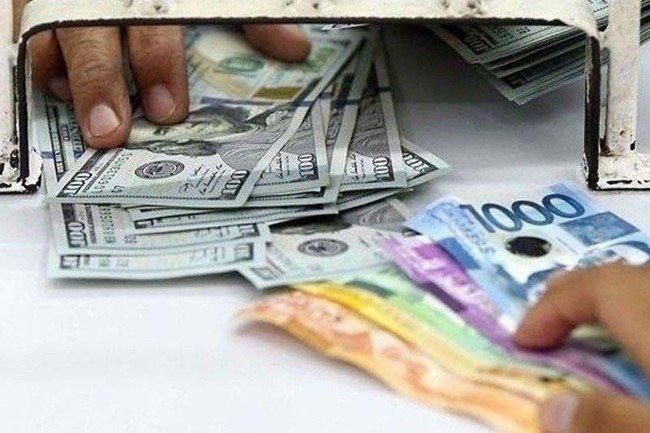Peso nearly hits 57:$1
MANILA, Philippines — The Bangko Sentral ng Pilipinas (BSP) is not worried about the weakening of the peso against the dollar, which almost touched the 57 level yesterday due to the narrowing interest rate differential between the Philippines and the US.
The peso lost 46.5 centavos to close at 56.78 to $1 yesterday from Friday’s 56.315. The local currency opened weaker and almost touched the 57 to $1 level as it lost steam further to hit an intraday low of 56.99.
According to BSP Governor Eli Remolona Jr., the depreciation of the peso against the greenback was due to the decision of the US Federal Reserve to raise key policy rates by another 25 basis points, translating to a narrower trade differential of 75 basis points.
Likewise, Remolona also cited the decision by Fitch Ratings to downgrade the credit rating of the US to AA+ from AAA.
He explained that the peso has depreciated by 0.56 percent, making it the fourth least depreciated currency in the region after the Indian rupee’s 0.07 percent, Vietnamese dong’s 0.40 percent and Singaporean dollar’s 0.42 percent.
“Compared to our neighbors, the peso has weakened only slightly. The peso is somewhere in the middle,” the BSP chief said.
External inflows from remittances of overseas Filipino workers (OFWs) along with foreign direct investment (FDI) inflows continue to help build up the country’s foreign exchange buffer.
Although the country’s gross international reserve (GIR) level fell below the $100 billion level in May and June, Remolona said the foreign exchange buffer remains ample.
“These reserves provide a cushion against negative global spillovers. Our reserves have hovered around $100 billion, we expect it to remain at roughly the same level in the coming years. We need these reserves because we think the world will slow down next year and the following years especially because of what the Fed has done,” he said.
Most economists expect the central bank’s Monetary Board to keep interest rates untouched anew on Aug. 17 amid the inflation downtrend and the disappointing gross domestic product (GDP) growth recorded for the second quarter of the year.
“We now anticipate the Monetary Board may opt for a hawkish hold beginning Aug. 17 to assess the inflation risks amid slowing growth and commit to possible actions should inflation risks escalate, chief of which may be a possible sharp spike in oil prices,” Security Bank chief economist Robert Dan Roces said.
Remolona reiterated that the decision of the Monetary Board would continue to be data-dependent as inflation eased for six straight months to 4.7 percent in July from a peak of 8.7 percent in January, while GDP growth slowed significantly to 4.3 percent in the second quarter from 6.4 percent in the first quarter.
“We will go where the data will lead us but sometimes the data don’t seem to know where to go,” he told participants of the economic briefing.

